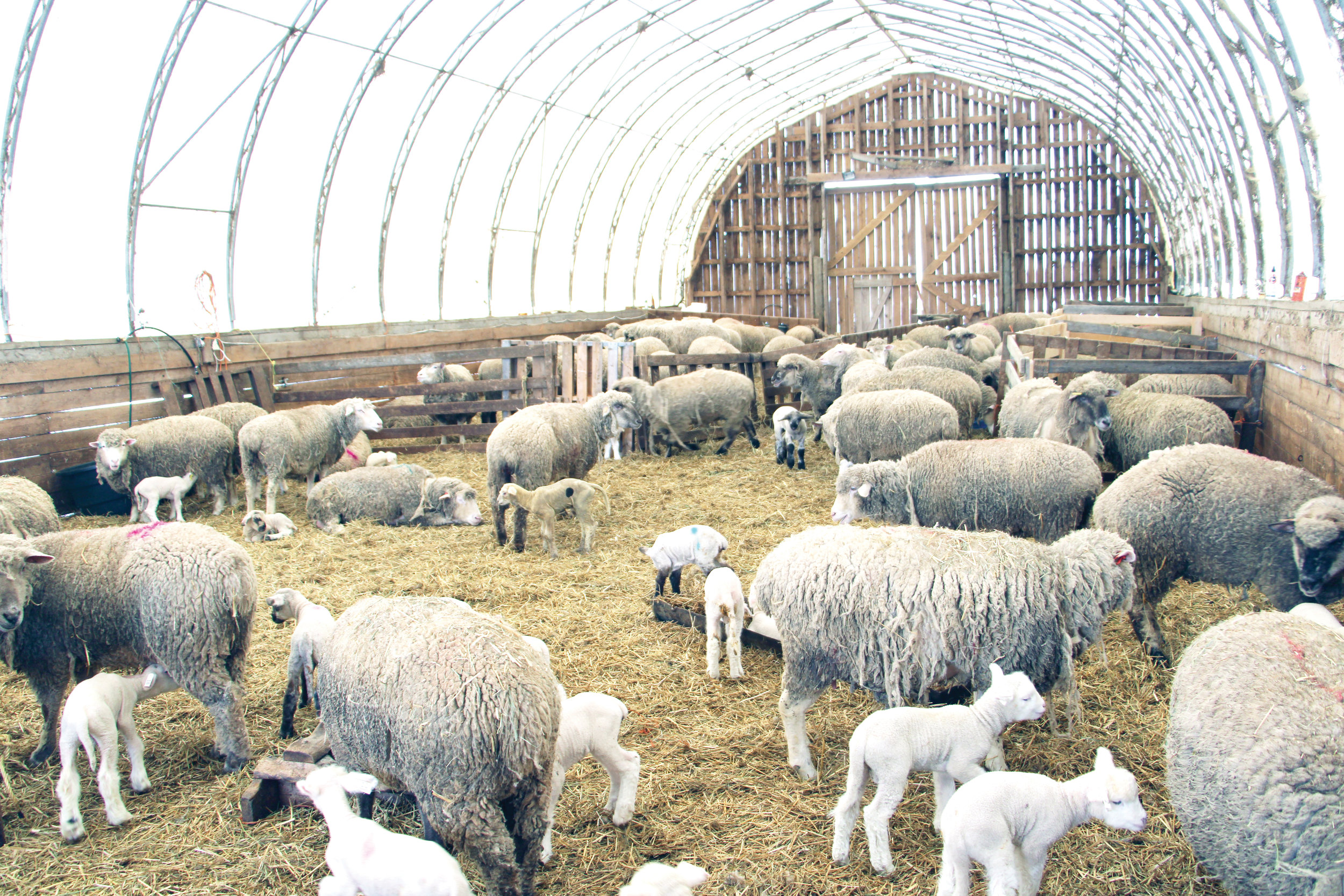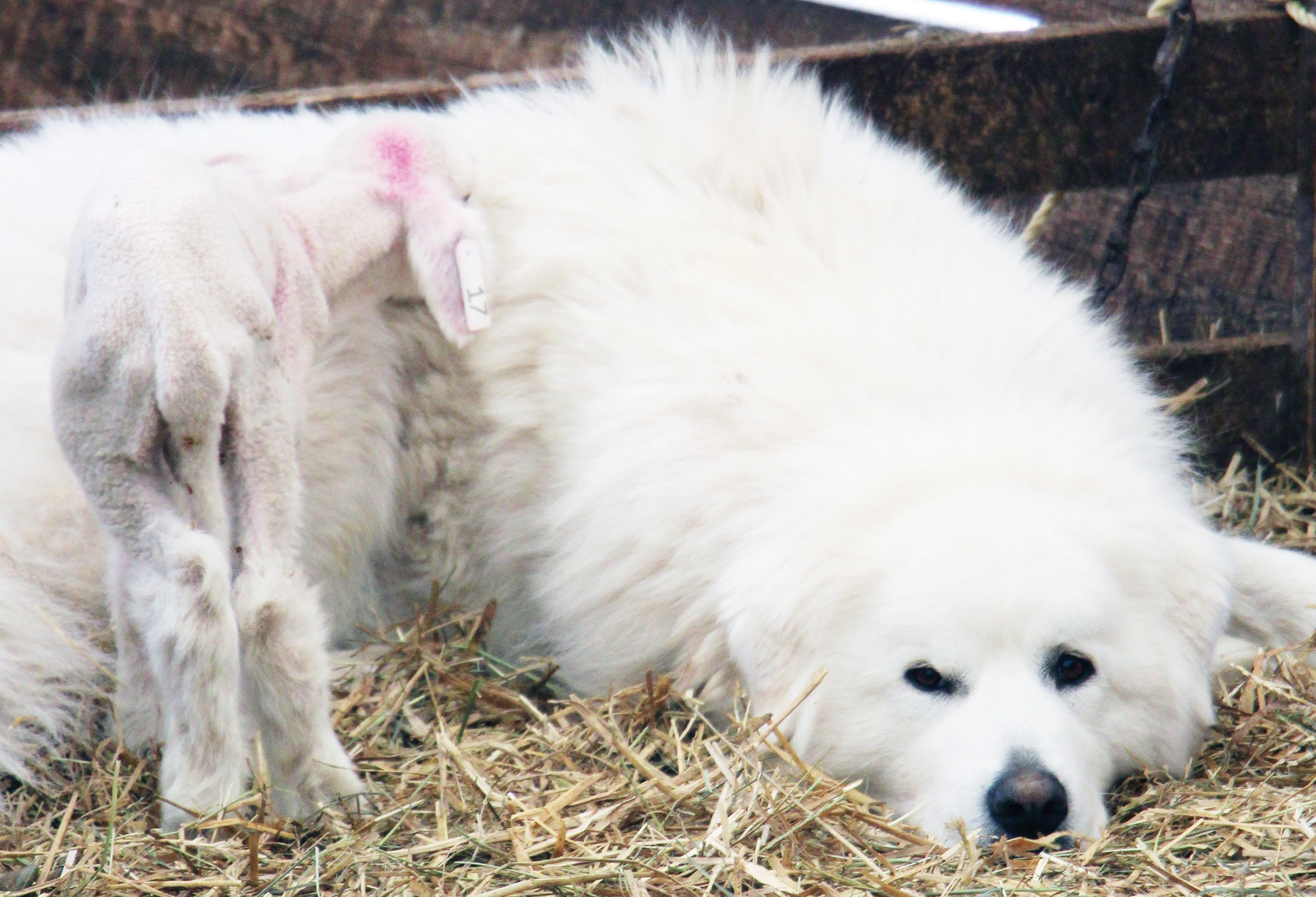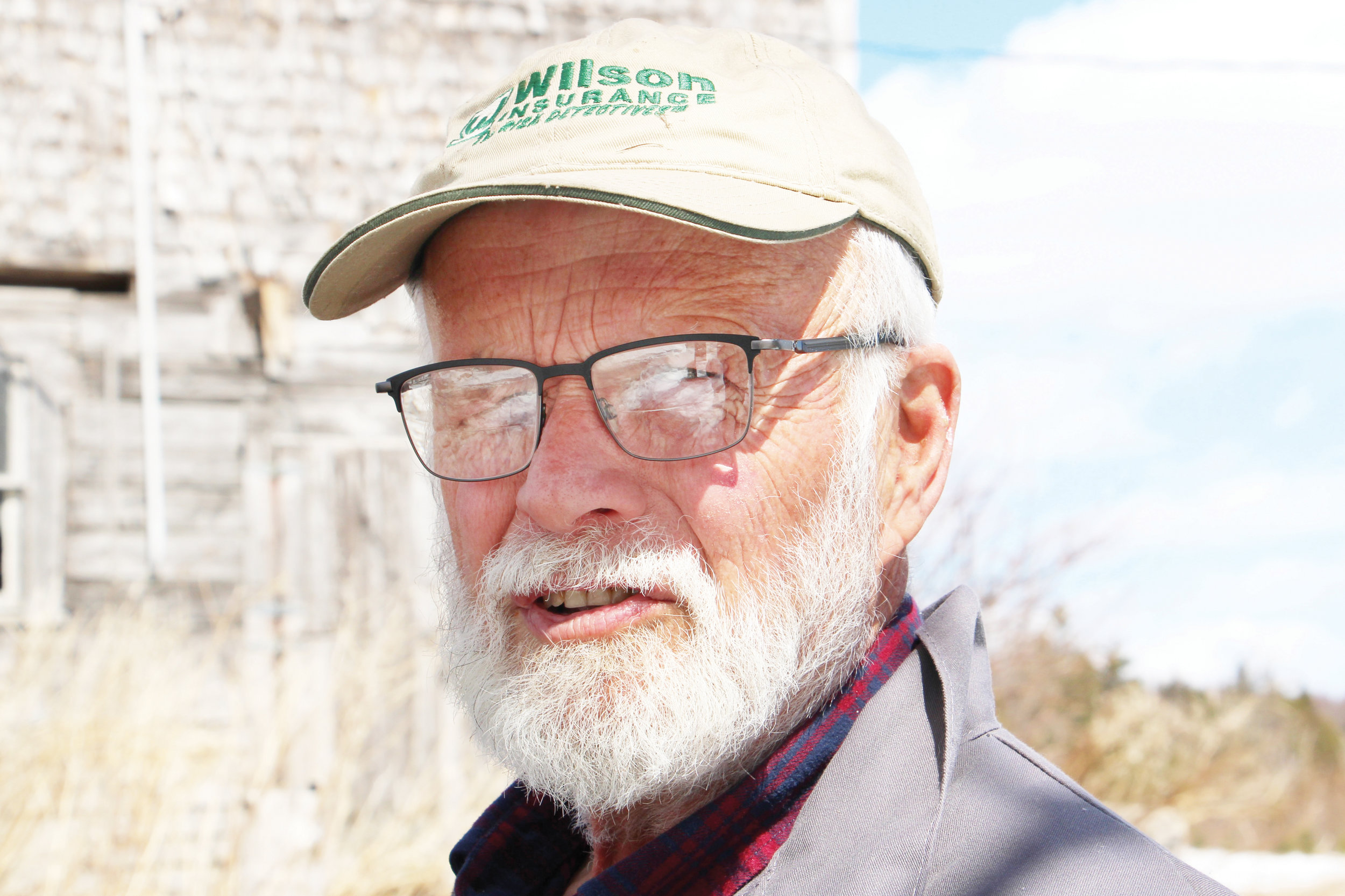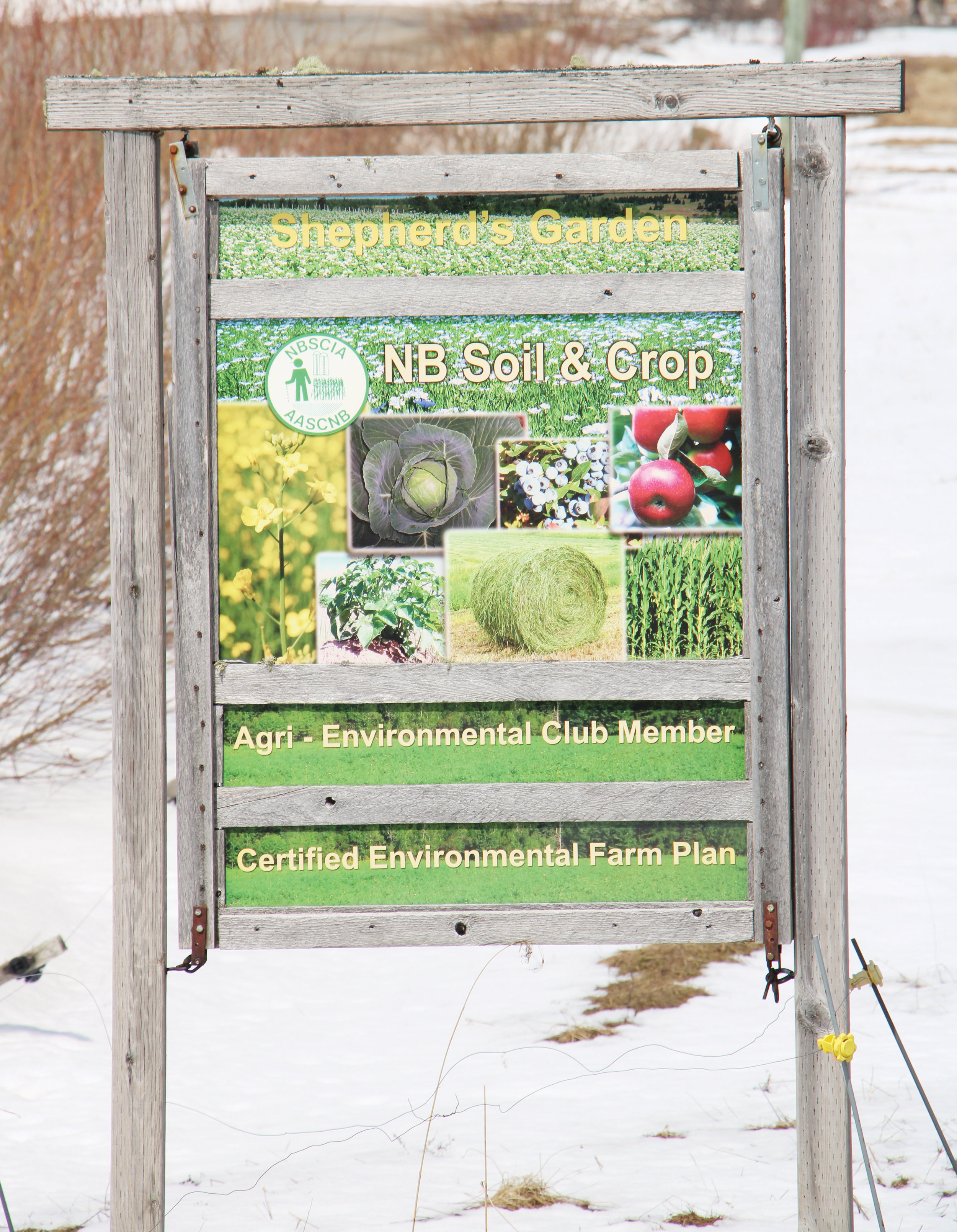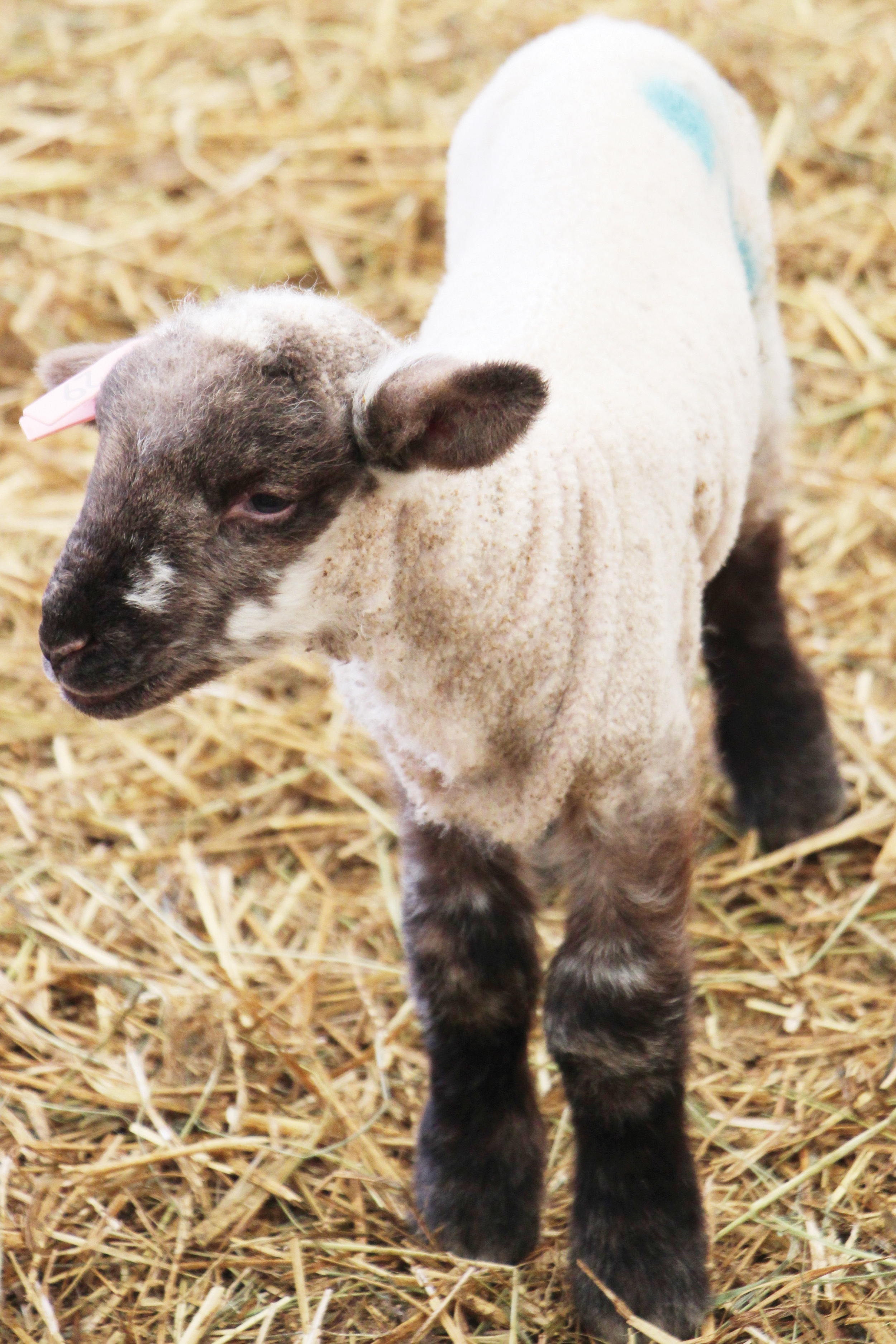Retirement looks pretty busy for N.B. sheep farming couple
/by George Fullerton
April is a busy time at the Shepherd’s Garden farm near Harvey Station, N.B. The farm’s owners, Ted and Louise Wiggans, put in some very long and late hours lambing their 85 ewes.
Ted got his farming stripes as a child growing up in southern Ontario, where both sets of grandparents operated busy farms. He had a career in corrections, working in and managing detention centres in Ontario, Saskatchewan, and New Brunswick, but maintained a strong connection with his agrarian roots.
While working at the Moncton Detention Centre, Ted and Louise bought a beef and orchard operation in the village of Salisbury. After Ted transferred to a management position at the Kingsclear youth detention centre, the family began looking for a farm to buy in the greater Fredericton area, specifically around Stanley, north of the city, and around Harvey, southwest of Fredericton.
“I was driving by this farm and saw a hand-painted sign at the mail box indicating the farm was for sale,” said Ted. “Since I was not having much luck with real estate companies, I pulled into the yard and spoke a while with the owner. We agreed on the sale and shook hands on it. We had our farm.”
The 67-acre farm, nearly all cleared, came with a big old farmhouse and big old timber-framed barn. Ted, Louise, and their four children moved in. That was 31 years ago. They eventually purchased 28 acres adjoining their farm.
They started out with some cattle and began a market gardening operation. The garden production became certified organic in 1992.
“We definitely had a very strong market for organic vegetables,” said Ted.
Vegetables were marketed through the Fredericton Boyce Farmers’ Market and the St. Andrews Farmers’ Market, as well as through stores in Fredericton. Since their market for vegetables was so strong, they constructed a 30-by-96-foot tunnel greenhouse to nurse seedlings and extend the growing season.
“In the past, we also had eggs, and we could make some money with eggs at the market,” said Ted, adding that since they were only at the market for the vegetable season, it was difficult to sell their eggs for the balance of the year.
In addition to having their own children involved in the farm, Ted and Louise employed other local youth through the summer. Ted and Louise valued seeing a number of young workers mature and take on responsibilities, both on the farm and at the market stalls.
BARN RAISING
The sheep operation began some 30 years ago, with the barn constructed from repurposed greenhouse hoop frames. The hoops are mounted on top of 12-foot posts, which are sunk six feet in the ground. The trench for the posts was filled with gravel and capped with clay soil, and Ted pointed out that none of the posts have moved due to frost action. The 30-by-88-foot barn has sliding doors on each end, allowing for the winter hay supply to be loaded in and the manure to be loaded out.
The tarp provides good light and there is good air circulation. Pens are assembled with moveable wooden panels, which are arranged to meet sorting needs. There are individual pens for ewes and their new lambs.
Lambing pens are placed along the edge of the barn, where ewes and lambs typically stay for a few days, depending on their needs. Triplets and quadruplets usually have a longer stay.
The sheep barn is home to two Great Pyrenees dogs through the barn seasons, and then they go to pasture with the sheep.
Coyotes have been a serious problem over the years. Ted pointed out that he tried six-wire high-tensile electric fence for coyote control, but it was not effective. A donkey was somewhat more effective, but the dogs have worked best. However, they need to be trained and managed.
Ted administers a commercial dewormer to the sheep three times every year – after lambing, as the sheep go on pasture, and before breeding.
There are three major pastures and a new one coming this summer. Additionally, one field is hayed and sheep graze the regrowth. Grazing management depends on seasonal productivity. If there is lot of grass, lambs may go with the ewes for a period. If pasture production is not too good, the lambs will stay in the barn on hay and grain. The ewes come in the barn as the pasture season wraps up.
The ewes are fed barley in autumn leading up to breeding, again in the last six weeks of their pregnancy, and also into their lactation period. Grain typically stops when they go on pasture, save for brewer grain, which gets dumped along a pasture fenceline for the ewes.
New lambs get a selenium shot at birth. When things are really busy, ewes and lambs may be identified by a paint code. Lambs are ear-tagged as soon as the work schedule permits. Lambs go on a commercial creep feed as soon as they move around the barn and find their way into their creep.
The hoop barn is filled with hay through the summer and the ewes eat their way in after the pastures finish.
The ewe flock is mainly Dorset and Polypay, with ram power from Polled Dorset, with Hampshire and Suffolk rams used periodically. Rams are primarily purchased in New Brunswick, although some come from Nova Scotia.
MEAT AND WOOL
The lamb is sold from the farm, fresh at the Boyce Farmers’ Market, and frozen to select customers.
“Fresh lamb sells quite well at the market because people like fresh lamb,” said Ted, adding that their market stall also features wool products such as yarn and Louise’s knitted items.
Shearing gets underway prior to pasture turnout. The typical crew in years past has been Ted and Brian Trenholm.
“We made a good team,” said Ted. “I would flip the ewes and trim their feet and then pass them to Brian for shearing. It would be a long day and the hardest day of the year. Last year, I brought in another assistant for shearing. He bags the wool and lends a hand wherever needed. Brian and I are getting older. We can’t seem to get done what we used to get done.”
The wool is delivered to the nearby Briggs & Little Woollen Mills operation in York Mills. After the wool has been processed, Louise picks up the yarn and turns a good deal of it into knitted products.
Manure is spread on fields and pastures, and wood ash is applied for pH balancing.
Ted and Louise have been longtime members of the New Brunswick Soil and Crop Improvement Association’s Central local. Ted said the membership has been a good asset for the farm. They’ve had help developing an environmental farm plan, building Ducks Unlimited ponds, and farm mapping.
Ted and Louise have scaled back their vegetable operation because they were looking to lighten their workload, but they still plant around 3,000 garlic plants every spring. The garlic is harvested, cured, and then stored in the house basement. Marketing begins in the late autumn after most other producers have sold their crop.
While Ted and Louise claim to have cut back their farming operation, they still appear to have kept fairly busy, and are really enjoying their home, farm, and “retirement.”
